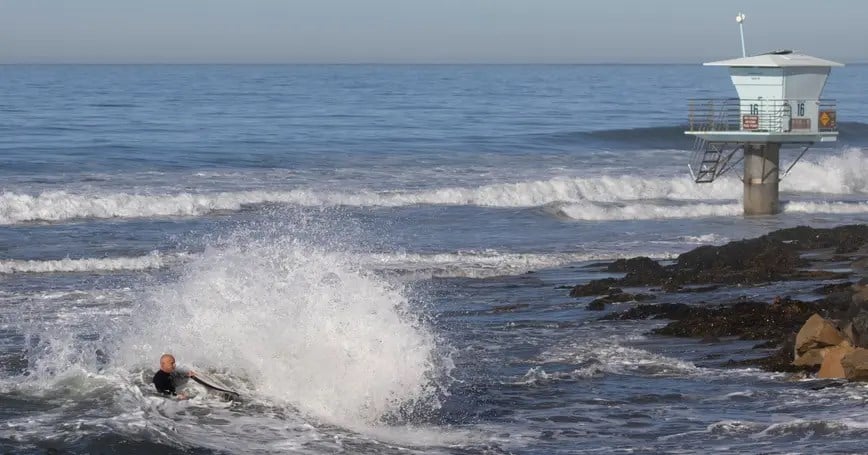Sea levels rising 'faster than feared' in southern US: Study
Since 2010, the US southeastern and Gulf of Mexico coastlines have experienced what experts are calling a remarkable rise in water levels; an increase of nearly 12.7cm.
-

A surfer makes his way to the beach during a King Tide event along the California coastline at Cardiff State Beach. (Reuters)
Coastal towns in the southern US, such as Miami, Houston, and New Orleans, are in far greater danger from sea level rise than previously thought, as per a new analysis.
Since 2010, the US south-eastern and Gulf of Mexico coastlines have experienced what experts are calling a remarkable rise in water levels, recording an increase of nearly 12.7cm.
That “burst”, more than double the global average of 0.17in (0.44cm) per year, is fueling ever more powerful cyclones, including Hurricane Ian, which struck Florida in September and caused more than $113 billion of damage.
In vulnerable parts of the US where millions of people live, the University of Arizona study provided a disturbing new assessment of a critical component of the increasing climate emergency, as reported on Monday by the Washington Post and published in the Journal of Climate.
Sea levels might rise up to 30 cm by the middle of the century, according to current NASA projections, and longer-term predictions are far more ominous.
Read next: Sea level expected to rise a foot on US coastlines by 2050
The Gulf region from Texas to Florida and the southern Atlantic seaboard would experience the biggest alteration, as per the agency.
“The entire south-east coast and the Gulf Coast is feeling the impact of the sea-level rise acceleration,” the study’s author Jianjun Yin, professor of geosciences at the University of Arizona, said as quoted by the Post.
“It turns out that the water level associated with Hurricane Ian was the highest on record due to the combined effect of sea-level rise and storm surge,” Yin added.
Numerous densely populated areas along the coast are threatened by rising ocean levels. Flooding occurs frequently during high tides in Miami and Miami Beach, two areas that are commonly mentioned as the epicenter of the climate emergency. Florida, where the National Oceanic and Atmospheric Administration (Noaa) reported that more than 40% of all US hurricane impacts have occurred, has seen a sharp increase in the cost of property insurance in recent years.
Katrina in 2005 and Harvey in 2017 caused the two most expensive hurricanes in US history to wreak havoc in New Orleans, Louisiana, and Houston, Texas, respectively.
“What is likely to happen in Charleston is likely, absent a substantial shift in attitude, to happen in many other coastal cities around the globe,” wrote Susan Crawford, author of Charleston: Race, Water, and the Coming Storm.
The Post reported on a second study that was released on Monday on nature.com and that, in essence, confirmed the Arizona analysis's conclusion that there was an "acceleration" of sea level rise.

 3 Min Read
3 Min Read








